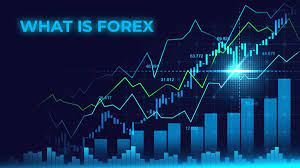
Identifying Support and Resistance Levels in the Forex Market
Leverage is a term that is commonly used in the world of Forex trading, but it’s a term that many beginners may not fully understand. Put simply, leverage is a tool used by traders that allows them to control large positions with a relatively small capital investment. However, with great power comes great responsibility, and it’s important to understand leverage and its implications on trading before you start risking your hard-earned money in the market.
In this article, we’ll discuss what leverage is, how it works, and what risks are associated with it. Whether you’re a newcomer to Forex trading or an experienced trader looking to brush up on your knowledge, this article will give you an in-depth insight into one of the most important aspects of forex markets.
What is leverage?
Leverage is essentially borrowing money from your broker to trade larger positions than you would otherwise be able to with your own capital alone. It increases your buying power, allowing you to magnify potential profits. Leverage is expressed as a ratio, for example, 1:100, which means that for every $1 you have in your account, you can control up to $100 worth of a currency pair.
How does leverage work?
When you open a trade, your broker sets aside a portion of your account balance as collateral to cover any potential losses. The amount of collateral required will depend on the size of the position you wish to take and the leverage ratio offered by your broker. If the market moves against your position and your losses exceed your collateral, your broker will issue a margin call. This means that you’ll need to either deposit more funds to your account or close some of your positions to free up more margin.
What are the risks associated with leverage?
Although leverage can increase your potential profits, it also magnifies the potential losses. With a high leverage ratio, even a small change in the market can wipe out your account balance. That’s why it’s important to use leverage wisely and always manage your risk effectively. It’s also important to understand that leverage is a double-edged sword. It can amplify both gains and losses, so it’s crucial to have a solid risk management strategy in place.
How should you use leverage
It’s essential to use leverage prudently and responsibly. The key to managing the risks associated with leverage is to have a sound trading plan and a well-defined risk management strategy. This could include setting stop losses, taking profits, and managing your positions carefully. You should also consider your account size and trading goals when selecting your leverage ratio. A more conservative approach would be to use lower leverage ratios, while a more aggressive approach would be to use higher leverage ratios.
Conclusion:
Leverage is a powerful tool that can help traders increase their buying power and potential profits. However, it’s important to use it wisely and manage risk carefully. By understanding how leverage works and its implications on trading, you’ll be able to make more informed decisions about your trades. Remember, trading is a marathon, not a sprint, and successful traders always prioritize risk management over potential returns. With the right mindset, solid plan, and careful use of leverage, you can trade the Forex markets with confidence and achieve your financial goals.


